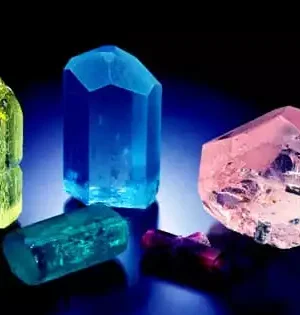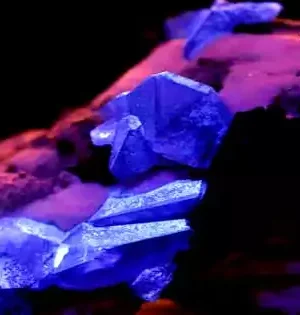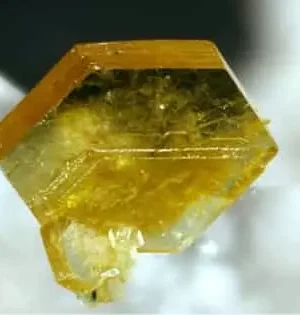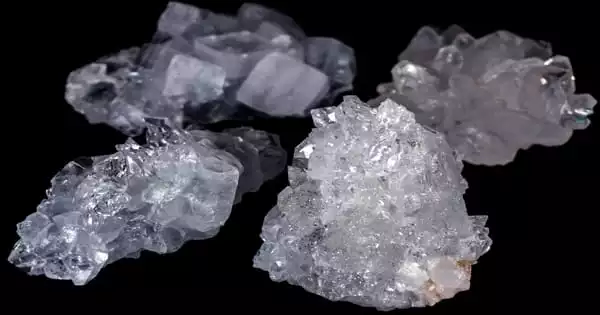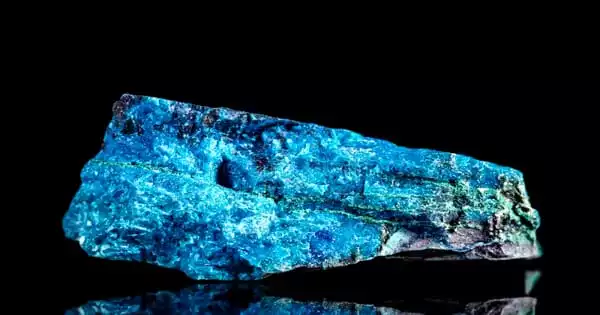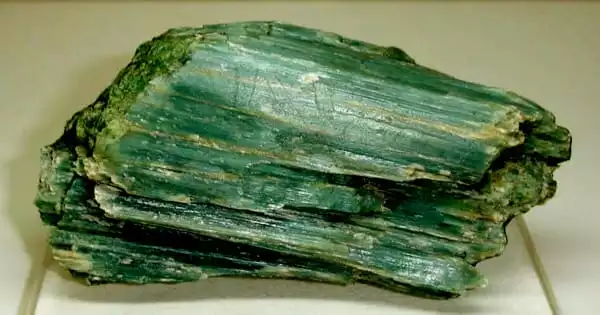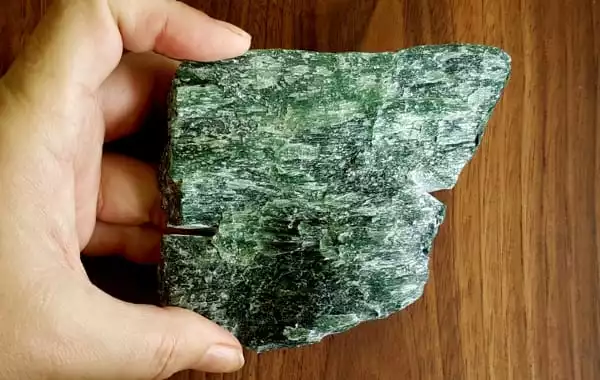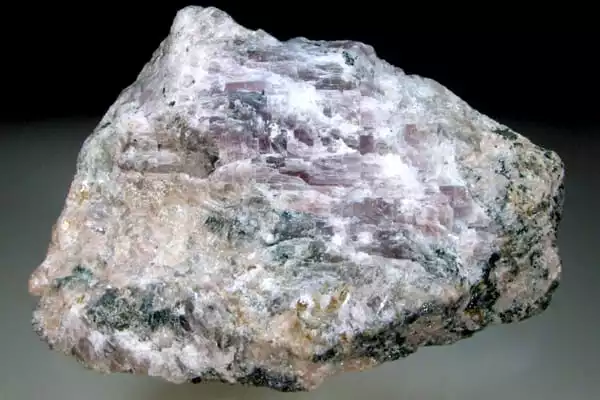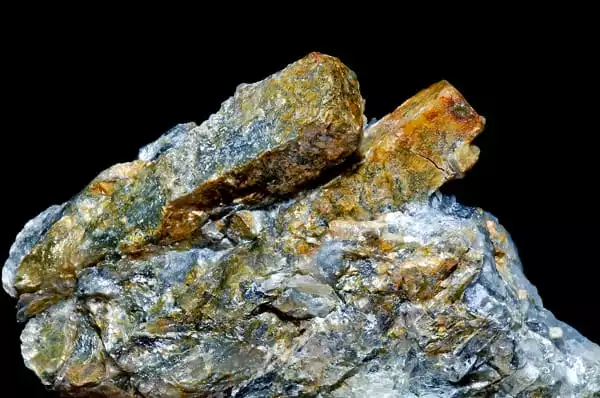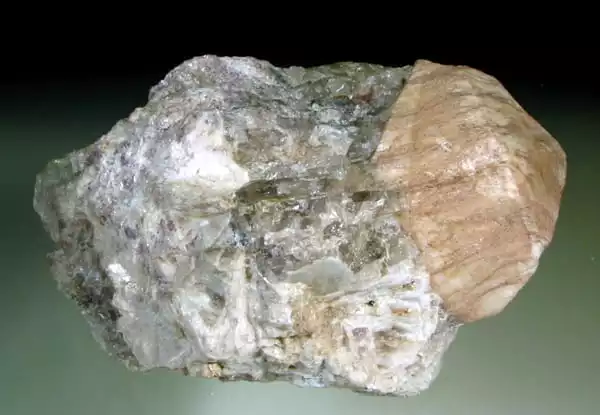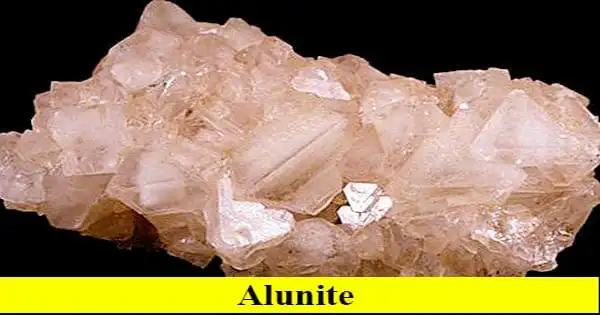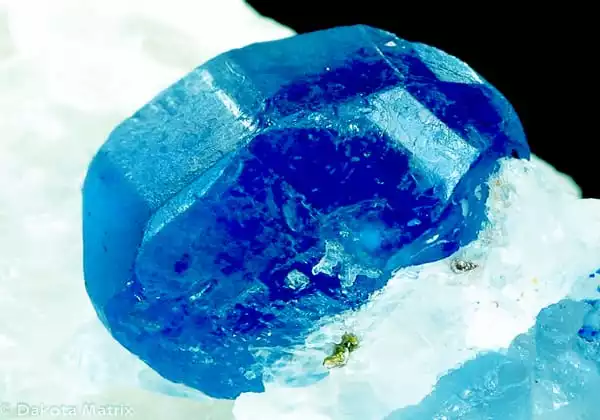What is Apophyllite?
Apophyllite belongs to the Phyllosilicate family of minerals. The term is derived from the Greek word ‘flake off.’ Apophyllite is often a white crystal, although it can also be found in blue, green, yellow, pink, or colorless varieties. It is considered to soothe the mind and clear bad thoughts.
Fluorapophyllite (the green hue), Hydroxyapophyllite (clear), and Natroapophyllite (brown/yellow colors) are the three forms of apophyllite minerals. The green variant is said to be the rarest of the three.
General Information
| Category | Phyllosilicate |
| Formula | (K,Na)Ca4Si8O20(F,OH)·8H2O |
| Crystal system | Tetragonal |
Physical Characteristics
- Color is clear, white, green, yellow, pink, violet, or rarely brown.
- Luster is vitreous to pearly on cleavage surfaces.
- Transparency: Crystals are transparent to translucent.
- Cleavage is perfect in one direction (basal).
- Fracture is uneven.
- Hardness is 4.5 – 5.
- Specific Gravity is approximately 2.3 – 2.4 (lighter than most translucent minerals).
What Chakra Is Apophyllite?
Which chakra apophyllite is linked with is a point of contention among experienced crystal collectors. There are three possible possibilities; the user must choose which one feels most aligned with them.
Apophyllite is said to aid in the development of psychic perception and clairvoyant powers. As a result, the third eye chakra is one of the chakras with which it is related. The crown chakra is one of the other chakras claimed to be directly influenced by apophyllite; being so close to the third eye, it’s no surprise that this stone may help and cleanse both of these related energy centers.
The heart chakra is the last but not least. The potential of apophyllite to offer clarity, tranquillity, and peace lies softly in the loving embrace of the heart chakra, and it may assist open up a blocked or sorrowful heart region.
Apophyllite Spiritual Meanings & Use
Apophyllite stones can help you become more spiritually elevated. They flood your auric field with high vibration light energy from the spiritual realms at the same time. These gems will activate the third eye chakra, enhancing your inner vision and eliminating any head chakra obstructions. Allow yourself to slowly ascend the route to the higher realms as your inner being begun to fully resonate with this profoundly spiritual frequency.
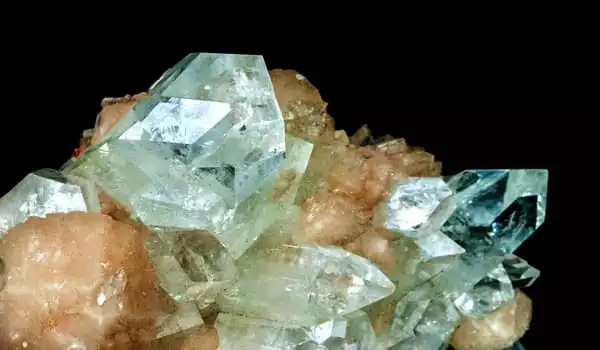
The Healing Properties of Apophyllite
Apophyllite is a spiritual stone that is a transparent resonator that carries electrical charge and links to higher realms. This crystal, which is always devoid of bad energy and jumbled emotion, quickly goes to work removing blockages, ensuring that your heart and mind remain clear and connected, ready to conquer those nagging emotions of tension and worry. Apophyllite is also recognized for its capacity to tap into underlying psychic talents, channeling ideas and sensations that transcend our simple bounds. This stone has a lot in store for people who are receptive to deeper spiritual practice, from clairvoyance and visions to connecting spirit and truth.
How To Use Apophyllite?
Apophyllite crystals are excellent meditation tools. It may open up your upper three chakras, connecting you to your higher self and heavenly consciousness, because of its very intuitive boosting power. Allow a little apophyllite stone to rest on your third eye (between your brows) while meditating or receiving a massage to accomplish its work.
Another option to use apophyllite is to wear it as a necklace around your neck. If you wish to use this stone to repair any physical difficulties with your lungs, keeping it near that location will be really beneficial. Maintaining a general vicinity can also help to open and purify your heart chakra.
Benefits Of Apophyllite
Because of its high-water content, apophyllite is an excellent conductor of energy and vibrations. This stone will enable you to obtain insights and visions from your angels and guides in a personal or business crisis. Apophyllite is a potent metaphysical stimulant. It can elicit introspection and intuition, as well as prompt you to consider your own actions and routines that are impeding your progress.

